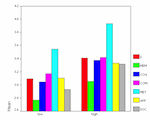Positive Psychology
The Science of Positive Psychology
The data proves the value.
Posted December 3, 2012

To earn the ‘Science of Happiness’ merit badge, Girl Scouts complete a series of activities such as making a collage about a person, place, object, or event that is meaningful to them. They generate a list of memories and anticipations that make them feel good about themselves or others. They create a “bliss box” full of persona artifacts that engender happy feelings. When they complete the menu of activities, the girls earn the badge demonstrating increased awareness of the science of positive psychology.
In the process, the scouts self-assess, self-monitor, and self-report adopting a research oriented perspective. Their own informal findings mirror the larger findings that confirm the efficacy of positive psychology. Dr. Seligman reports that here are 21 international replications [of research studies] that document that positive psychology exercises reduce depression and anxiety in children aged 10-12 as they grow. This meta-analysis is consistent with many other studies that assure the benefits of positive psychology.
The aggregated data from more than 200 strong studies of school-based social and emotional learning programs confirms the value of positive psychology in the classroom. The Penn Resiliency Program (PRP) research found that positive psychology interventions prevent symptoms of depression, reduce and prevent anxiety, decrease feelings of hopelessness, increase optimism, and improve well-being. PRP research concluded positive psychology programs decrease the prevalence of high-risk behaviors that interfere with academic learning. When positive psychology lessons are part of the learning plan, performance in the content area also improves.
A positive school climate predicts both teacher and student satisfaction, and a more optimistic outlook. If the teacher invests in positive psychology, he will have students in class who have a positive outlook, try hard, help others, and earn higher grades. Children and youth receiving high-quality instruction in positive psychology benefit significantly across a number of variables:
1. Better academic performance earning achievement test scores an average of 11 percentile points higher than students who did not receive such instruction.
2. Improved attitudes with greater motivation to learn, deeper commitment to school, increased time devoted to schoolwork, more positive behavior, and better attendance.
3. Fewer negative behaviors such as disruptive class behavior, noncompliance, delinquent acts, aggression, and disciplinary referrals.
4. Less emotional distress, depression, anxiety, stress, and social withdrawal.
Positive psychology teaches social and emotional learning skills that change how much -- and how well -- students learn by changing how they feel.
Will your students earn their science of happiness badge this week?
I would love to hear from you. Did you know that the Girl Scouts of the USA had adopted a 'Science of Happiness' badge. Could you develop a badge for your students to earn? Will you use happiness or the investigation of other emotions or strengths to teach scientific methodology in your classroom? Could you have students develop and implement positive psychology research? Were you aware of the research that documents the positive results of positive psychology? Do your informal observations suggest the same result in your classroom? Does your own experience concur?
----------
My upcoming book, Positive Psychology in the Elementary School Classroom, is the first in a series intended to help teachers build positive psychology classrooms. http://books.wwnorton.com/books/Author.aspx?id=23961
Visit me on Facebook https://www.facebook.com/drogrady
Follow me on Twitter https://twitter.com/pattyogrady
Join my Circles on Google+ https://plus.google.com/111049584788707351855


